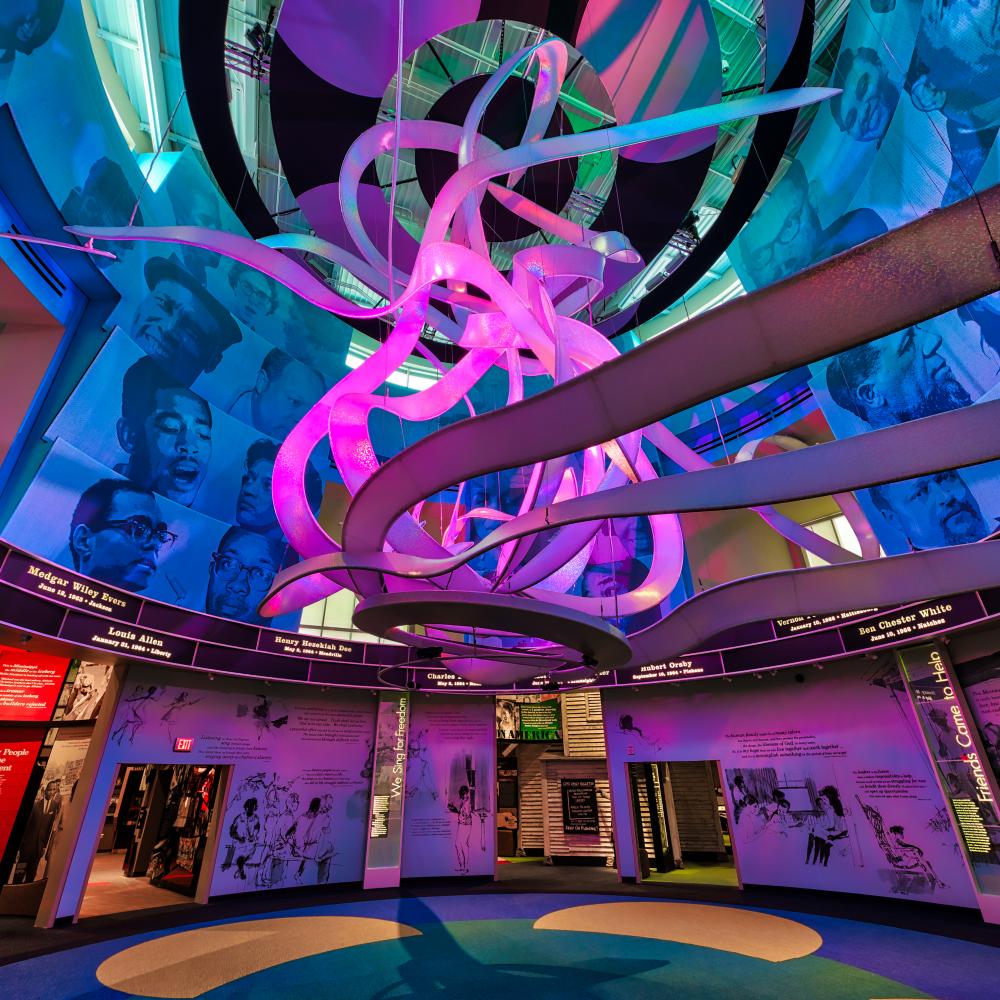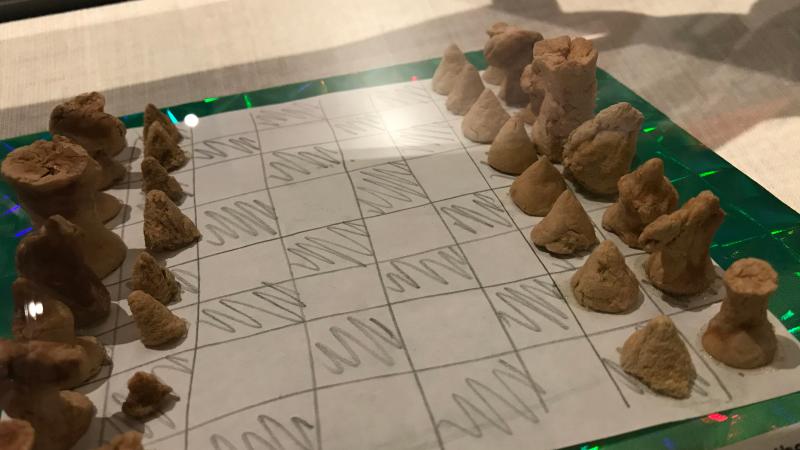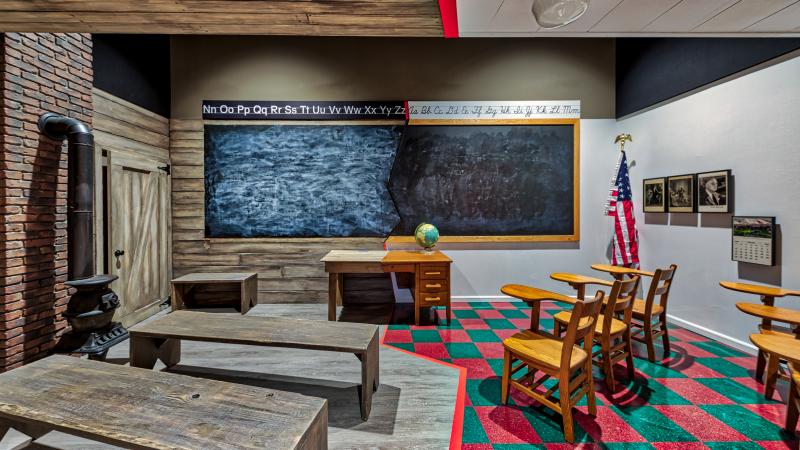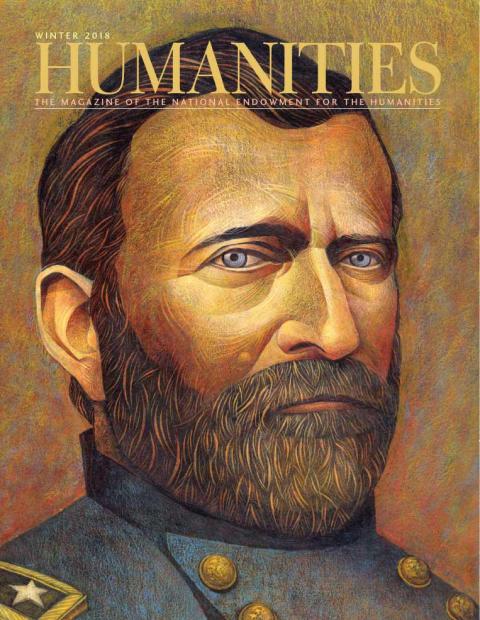The chess set is so small, it’s easy to miss in a case crowded with other artifacts in the new Mississippi Civil Rights Museum in Jackson.
The pieces were fashioned from white bread and spit by Freedom Rider Carol Ruth Silver during her time in Parchman prison. The pieces—pawns roughly similar to a Hershey’s kiss and the knights and queens most recognizable by their distinctive shapes—bear the seams of tiny bits of bread, molded and pushed into place and dried, the darker pieces marked with blood. On a “board” scribbled in pencil, the set helps illuminate the larger story of determination and injustice in the movement that changed a state and a nation.
The country’s first state-owned civil rights museum and the Museum of Mississippi History opened December 9, 2017, capping the state’s bicentennial and drawing more than 25,000 visitors in the first month.
Funded by $90 million from the Mississippi Legislature and an additional $19 million in private donations for exhibits and endowments, the two museums together cover 200,000 square feet. A lobby links the two, which share an auditorium, classroom space, cafe, community room, and a shop in downtown Jackson. The museums complement each other with a complete look at Mississippi’s past—confronting the pain and celebrating the progress. Richly layered exhibits and interactive displays engage on a historic and a human scale with compelling artifacts, images, art, sound, settings, and media.
The civil rights museum focuses on the period from 1945 to 1976, when Mississippi was ground zero for the civil rights movement. The sometimes violent, often valiant history of Mississippians’ struggle against racism and oppression unfolds in stories of segregation, integration, intimidation, murder, marches, voting gains, and strength.
It is not always an easy story to witness. Warning signs indicate graphic content in the small theaters that recount the harrowing events of Emmett Till’s kidnapping and murder, Medgar Evers’s assassination, and the murders of civil rights workers James Chaney, Andrew Goodman, and Michael Schwerner. The films bring together period footage and photos, firsthand accounts, and narration.
A schoolroom setting—one of several environments in the museum that put people in the moment—immerses visitors in the fallacy of “separate but equal.” Plain benches and wood floors on one side represent a black school; desks and tile floors on the other replicate a typical school for white children. Period film footage shows superficial attempts, such as new buildings that were still deficient, to “equalize” African-American schools and stave off integration.
Another display holds rusted pieces from slain African-American activist Vernon Dahmer Sr.’s pickup, a part still bearing a bullet hole from the Ku Klux Klan’s firebombing and attack on his home near Hattiesburg in 1966. His family fled in the truck, and Dahmer, who was targeted for his work to register black voters, died from injuries. On a wall nearby hangs a photograph of four of his sons, all in military uniform, looking at the charred remains of what had been their childhood home.
There are moments of respite. Like spokes of a wheel, the galleries connect to a central rotunda that offers a memorial and a chance to reflect. Through motion sensors, visitors interact with “This Little Light of Mine,” a suspended sculpture of interweaving, fabric-covered blades of light that dominates the room. The more people in the gallery, the greater the level of light. In several spots, a visitor waving an arm or walking by can see light respond and move through the sculpture. Names of civil rights martyrs encircle the gallery on a black band, while faces of the heroes—Freedom Summer mastermind Bob Moses, voting rights activist Fannie Lou Hamer, and many more—stretch toward the ceiling, illuminated in the sculpture’s glow.
A thread of inspiration and hope carries throughout, culminating in the charge, “Where do we go from here?”
Next door, the Museum of Mississippi History has a broader focus, covering the centuries from the first peoples through the present. Exhibits corral many stories to convey the texture, nuance, and diversity of cultures, and the ways they intersect. Native Americans, European settlers, enslaved Africans later freed, immigrant groups, and all their descendants have a stake. Tales of settlement and statehood, king cotton, slavery, farming, and industry are told through settings such as an inn on the Natchez Trace, a timber camp, a Mississippi River barge, and side-by-side interiors that contrast a wealthy planter’s house, a yeoman farmer’s home, and an enslaved person’s cabin.
Artifacts as large as the centuries-old, 25½-foot Swan Lake Canoe and as small as a jeweled necklace tell the respective stories of Native-American ingenuity and Civil War plunder. A scene of a levee camp after the Great Mississippi Flood of 1927 illustrates the dirty work of recovery, right down to a muddy stains on a bench. The worst flood in American history, it affected 27,000 square miles, and displaced 650,000 people (185,495 of them Mississippians), many of whom would join the Great Migration to the north as a result.
The museum highlights the state’s creative side as the home of writers such as Eudora Welty and William Faulkner, and as the birthplace of the blues and some of the country’s great musicians, such as Elvis Presley and Jimmie Rodgers. In a replicate juke joint, one can call up songs by Conway Twitty, Bo Diddley, the Staples Singers, and others with a jukebox and video.
Hundreds of school groups will visit on field trips in the coming months, but the museums’ next challenge is how to make their resources digitally accessible. A National Endowment of the Humanities $100,000 grant, matched in private support, will help fund an interactive classroom initiative to reach K–12 students. The outreach dovetails with key priorities of the Mississippi Department of Archives and History, which operates the museums, and is critical in a state with high poverty rates and many under-resourced schools.
“As [former] Governor William Winter has said, ‘This is the largest classroom in the state.’ So, we’ve been trying to think of it as a mobile classroom, . . . not only waiting for you, but also trying to get to you,” says Stephenie Morrisey, MDAH spokesman. “The department has an incredible digital archive, already available online, for any teacher to go to,” Morrisey says.
MDAH is focusing on ways to connect its resources with classrooms, targeting equipment and methods that are inexpensive and user-friendly. With a web stream, “all they have to do is have the link to sign up, tune in, and type questions in,” says Al Wheat, MDAH director of education. “You could hit multiple classrooms across the state, or really, the nation.”
Teacher interest in civics, the intersection of civil rights and arts, and the lives of movement leaders can be well served, says John Spann, education manager at the civil rights museum. “There are students, still today in Mississippi, who don’t know the full extent of what Medgar Evers did for Mississippi. We have the ability, through these museums, to speak on that, and not just talk about his assassination,” but also his life’s work.
Spann can see highlighting that small chess set, bringing an intimate focus to the artifact with a tablet and webcam. “We can go into the replica jail . . . and we actually have [Silver’s] own voice in an interactive,” adding depth to stories of the Freedom Riders’ resilience. “They are keeping their dignity and humanity under inhumane conditions.”
MDAH staff is keeping a close eye on the new state curriculum for social studies, expected for rollout in March, to see how museum exhibits can complement it. Brother Rogers, MDAH programs and communication division director, says, “We’re not teaching Mississippi history, but we’re helping those who do teach Mississippi history do a better job.”




